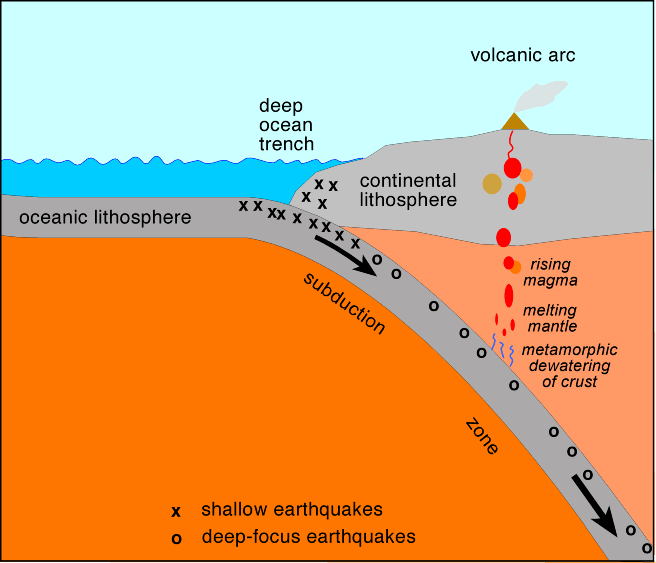
The subduction zone is the place where two lithospheric plates come together, one riding over the other. Subduction is the process that takes place at convergent boundaries. Rates of subduction are typically measured in centimeters per year, with the average rate of convergence being approximately 2 to 8 centimeters per year. Stable subduction zones involve an oceanic plate sliding beneath either a continental plate or another oceanic plate. An oceanic plate will sink back into the mantle. The oceanic plates are formed from mantle material at midocean ridges. Young oceanic lithosphere is hot and buoyant (low density) when it forms at a midocean ridge. But as it spreads away from the ridge and cools and contracts (becomes denser) it is able to sink into the hotter underlying mantle. Three key features are associated with subduction zones:
- a deep ocean trench;
- a volcanic arc on the overriding plate parallel to the trench;
- a plane of earthquakes, shallow near the trench and descending beneath and beyond the volcanic arc.
Most volcanoes on land occur parallel to and inland from the boundary between the two plates.
Orogenesis, or mountain-building, occurs when large pieces of material on the subducting plate (such as island arcs) are pressed into the overriding plate.
The older, heavier plate bends and plunges steeply through the athenosphere, and descending into the earth, it forms a trench that can be as much as 70 miles wide, more than a thousand miles long, and several miles deep.
The Marianas Trench, where the enormous Pacific Plate is descending under the leading edge of the Eurasian Plate, is the deepest sea floor in the world. It curves northward from near the island of Guam and its bottom lies close to 36,000 feet below the surface of the Pacific Ocean.

